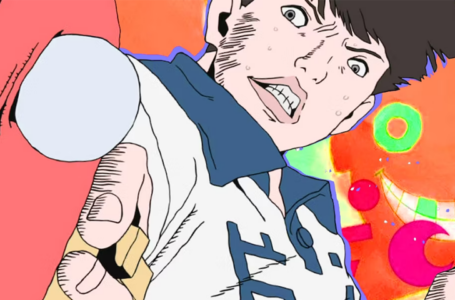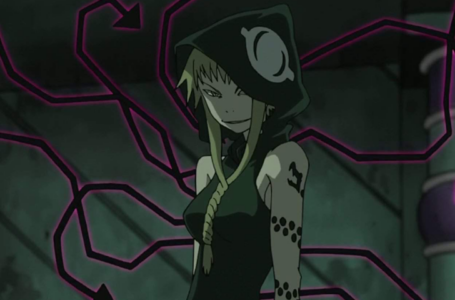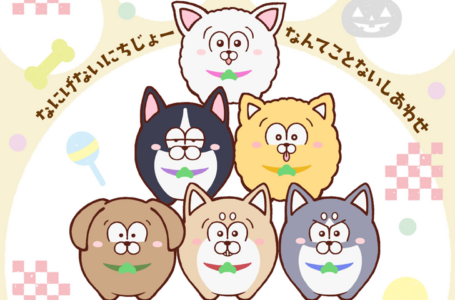The surprisingly emotional core of Witchblade’s ecchi anime adaptation
Back in 2006, the American comic Witchblade, which originated in 1995, recieved a surprise anime adaption release. The anime is set in the same universe of modern Earth many years after the comic’s events, but has an original story, new characters and lot more fanservice — as you might expect from an anime adaptation.
However, it defies all expectations; while it might initially look like a guilty pleasure watch similar to Queen’s Blade, Witchblade has an unexpectedly, surprisingly deep and emotional core to it that can easily be passed off with a mere glance, so here I am to sell to you why you should give Witchblade a chance if you haven’t already. Or, indeed, if the prospect of fanservice hasn’t already convinced you.
Please be advised of spoilers ahead!
The details
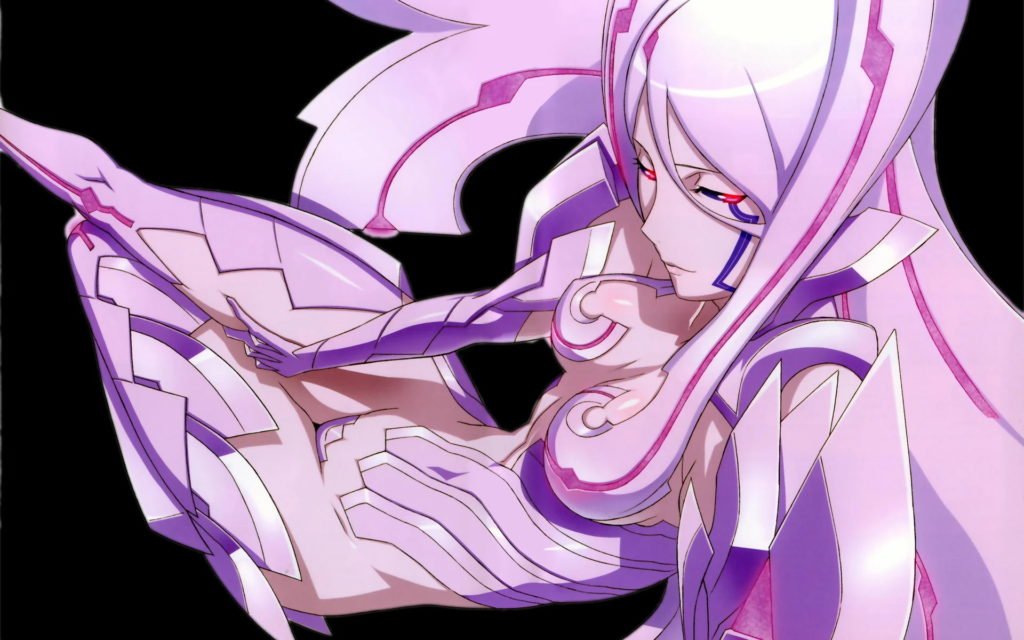
The animation is the work of the studio Gonzo, best known for Hellsing, Gantz and Black Cat. This means you can rely on each episode being consistent in its presentation, be it a more drama-heavy episode or an action-filled one. However, the latter may be underwhelming to those looking for another anime with action as good as Katekyo Hitman Reborn!, also from 2006, but the show’s central characters and emotional hits are the reasons why you should watch Witchblade.
Its character designs were done by none other than Makoto Uno, whose name will be familiar to those who like their ecchi art — he certainly has made a name for himself, particularly recently with titles such as Interspecies Reviewers and High School DxD under his belt.
The creator of these well endowed women really hammers home how sexualised its female heavy cast is, yet the anime is still somewhat less shocking than its comic origins. This does not mean that it shies away from darker turns, mid — just see examples such as the disturbing sexual predator Shiori, or the messed up origins of the Cloned Witchblades.
Yet still, Witchblade’s true appeal is in its grounded and human story of a mother doing all she can with what she has to protect the one thing she cares about: her daughter.
The many similarities to Claymore
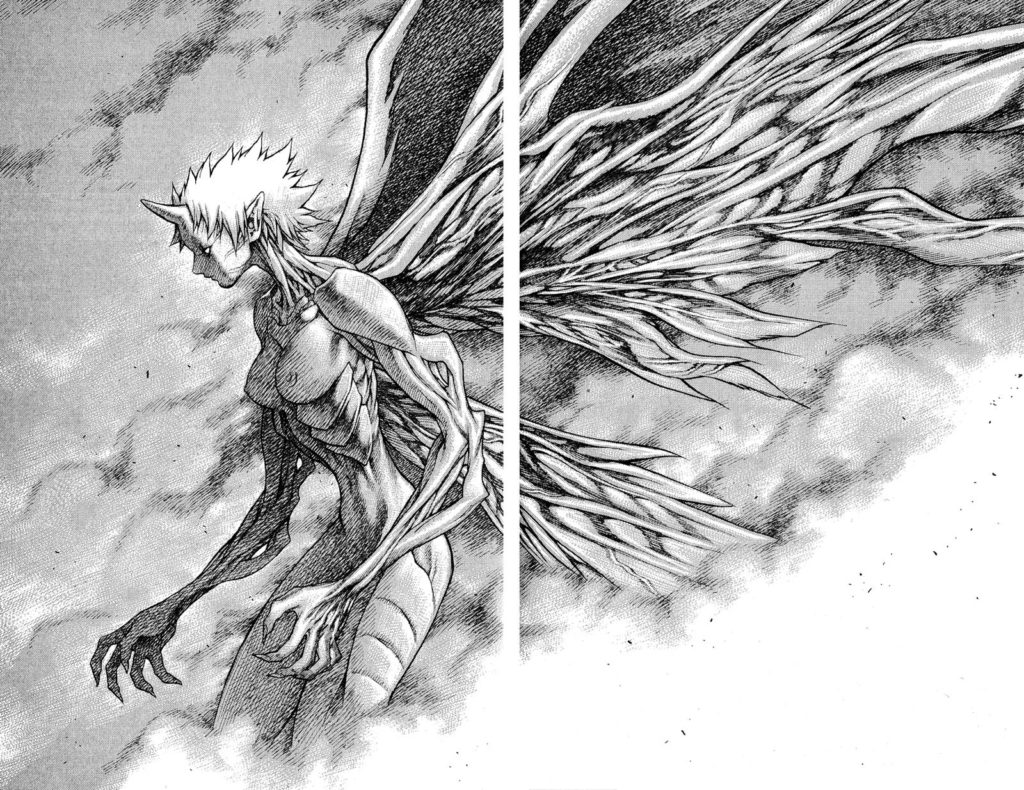
I would be bringing up comparisons to Norihiro Yagi’s Claymore sooner than later, so how about we get right into it? We all know of the adoration I have for this series, but it crosses over nicely with Witchblade’s core appeal elements.
The two shows share the music composer Masanori Takumi, who delivers yet another memorable and fitting original score for Witchblade for each scene, be it the tension of Masane transforming into her Witchblade form, or the more emotional scenes during the the all-important mother and daughter bonding. This latter aspect in particular is worthy of note, as the very brief flashbacks that depicted how close Claire and Teresa’s bond was in Claymore is similar to the depiction of motherly love in Witchblade — and ultimately resulted in Teresa finally finding happiness in its cruel world.
This theme is a crucial part of Witchblade too, even if its non-human characters do not realise it themselves. This is most relevant for the Cloneblades, who never manage to find what fulfils them in life, and instead are stunted by particular obsessions.
Each show delves into the misfortunes its once-human characters face, now that they are being used as weapons by an organisation with ill intent, and the anguish of using a power that is out of their control, that ultimately leads into their suffering and eventual demise.
In Witchblade’s case, it touches on this issue more so than in Claymore, what with most of its deeply troubled female cast members succumbing to the Witchblade. It results in their body and mind disintegrating as they reach an emotionally draining and disorientating meltdown due to the Witchblade’s power. It goes so far as to conclude with the death of our protagonist — even Claymore managed to give its leading lady a happy ending.
Both shows also involve their respective ladies breaking out from their shackles and opposing the organisations who control them, albeit in Witchblade’s case, the overall story still manages to be far more devastating to all its sympathetic characters in the end.
And of course the emphasis on sexualisation is there in both — particularly in the case of the characters deriving sexual gratification from their transformations, be it when Claymores awaken, or when Witchblade users transform. While Claymore has the monsters known as Yomas as the fodder enemies, Witchblade’s equivalent is the X-Cons that take on many different forms, from a massive mosquito, to a microwave. As far as designs go, Norihiro Yagi is untouched in this department. Both anime series also have the female fighters “sensing” their enemies, with Witchblade’s protagonist Masane being a special case — she can sense warning signals when her adoptive daughter Rihoko is in danger, reinforcing how strong their bond is and hinting at Rihoko’s significance to the Witchblade.
The tragedy of humans being used as weapons also translates into the X-Cons, who also used to be human. The exaggerated forms of the Cloneblades that highlight their individual skills and abilities are nicely detailed — and also similar to Claymore’s Awakened Beings. Particular highlights include antagonist Maria’s fingers, that are able to extend and pierce — something very similar to the feats of Priscilla’s Awakened Being form in Claymore. All in all, you can probably tell why I am recommending it a watch already!
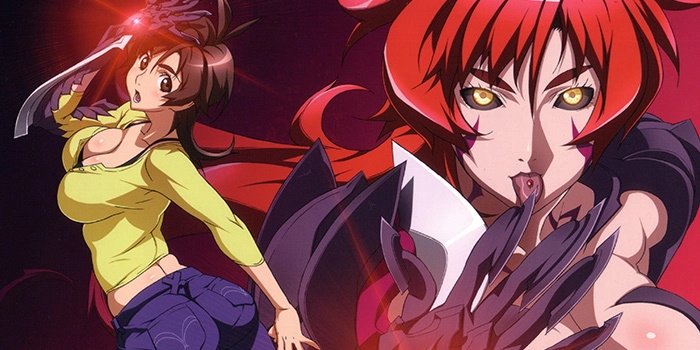
A story of how familial love can make or break us
But let’s get into the story details now. Protagonist Masane Amaha lost all her memories prior to the Great Quake 6 years ago, with a single belonging on her being a maternity record and Rihoko Amaha as a baby in her arms. Ever since then, Masane’s one and only goal is to provide for Rihoko, keep her safe and loved, and accumulate money for Rihoko to use as she grows up.
A child welfare agency separates them and throws Masane in jail, where she is attacked by an X-Clone, awakening her Witchblade powers. She is captured, tested on and ends up signing a contract with Reiji Takayama, the Bureau Chief of Douji Group Industries, to take out I-Weapons — mechanical monsters made by the company. He pays her for her work and gives both Masane and Rihoko a place to live.
Masane is a refreshing protagonist. Her clumsy and childish disposition is juxtaposed with her more capable and intelligent daughter, both undeniably lovable when together and on their own. Rihoko is more often than not the carer of Masane despite being her daughter, be it by cooking her mother delicious meals, or taking care of her during a hangover.
While their unusual dynamic makes Masane a questionable mother, her care and love for Rihoko is immeasurable. From running barefoot to Rihoko when she fainted on the street, to her very quick decision in life not being worthwhile when Rihoko is taken away from her, her countless actions that always put Rihoko first are always admirable — and provide ample proof of Rihoko being the sole reason for her continuing will to live. In fact, once we learn of her past where she was a nobody with no-one important to her, Rihoko’s existence made her finally feel significant — she truly did end up being her reason for existing.
It is also refreshing how simple scenes such as Rihoko brushing her mum’s hair and cooking for her all make it clear that Rihoko loves her mother and feels loved. This is made all the more evident by the empty and lacking feeling she experienced when attempting to be closer to her biological mother, who does not indulge in these same pastimes.
It even goes as far as Rihoko not seeing Masane’s transformation into her Witchblade form as anything other than Masane — she still knows she is her mum and loves her even in this form. This was a prime concern of Masane’s for the majority of the show in fact. It makes the central message of the anime all the more apparent: the love between mother and daughter can be unusual, but it is still undeniably strong and ever-present, no matter how it may come across. It does not even matter that they are not linked by blood because of how strong their relationship has always been.
Additionally, Masane’s airheaded, childish and incapable nature ends up being both endearing and personally encouraging to everyone who questions their own capability as parental figures — or that might just be me.
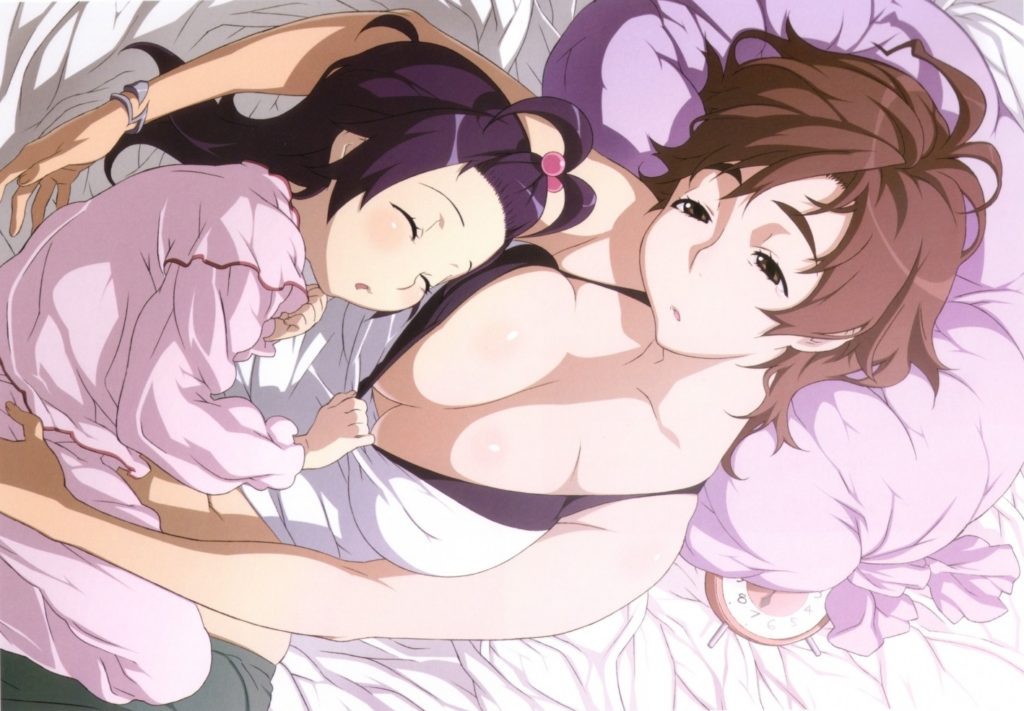
The bottom line is, Masane defies everything to protect Rihoko, even willingly being killed by the Witchblade — the source of power she once feared — to permanently destroy the possibility of Rihoko ever having to bear its burden.
And when I mentioned the show’s emotional highs, one such scene is between its mother and daughter, and shows the importance of Rihoko’s cooking. Masane loses her sense of taste by the very end due to the Witchblade draining her life force, and shares one final meal with her. She denies how far gone she is, even though she can no longer taste her daughter’s delicious food that she loves so much. The anime manages to pull on your heartstrings, with Masane cursing the Witchblade for depriving her of a happy life with Rihoko being a truly powerful scene.
Additionally, Masane’s relationship with her “employer” Takayama was thoroughly enjoyable to watch unfold, and was actually a rather unexpected development considering the genre of the show.
The slow breaking down of Takayama’s professional and stoic nature into something rather more soft when around both Masane and Rihoko makes for a very endearing watch, and it results in a cute, happy family unit I wished to see more of — especially because of how short lived it was.
But at least we had a few moments of comedy to take away from the depressing tone that lingered throughout the show’s runtime thanks to its supporting characters. The friendly and loving unit of friends in Mariko’s dining bar made for a breath of fresh air during the start of most of its episodes, even with its beach filler episode. And my favourite episode, which involves Takayama and Masane going to a business party, has all the romantic tension of a rom-com all on its own — absolutely splendid.
Every single entity yearns for a sense of belonging
I think we all love a story where characters who were once human struggle to understand what it means to be human. Be it due to an experiment gone wrong (Elfen Lied), or the manipulation of children (Gunslinger Girl), each story sets up characters that are always sympathetic, deep, and complex.
This goes for Witchblade too, and is arguably highlighted best in the character of Maria. She is a major antagonist who we follow early on as the clearest indication of how disturbing and unnatural each Cloneblade’s treatment is. With a body that has aged quicker than her child mind, she’s left craving the feeling of wanting and needing the familial love that has been missing in her life. She never got a childhood; from the moment she was artificially created, her body and mind were measured to determine how strong she was, and trained relentlessly to become an appropriate candidate for the Dual Witchblade, a newer Witchblade where two Witchblades are worn.
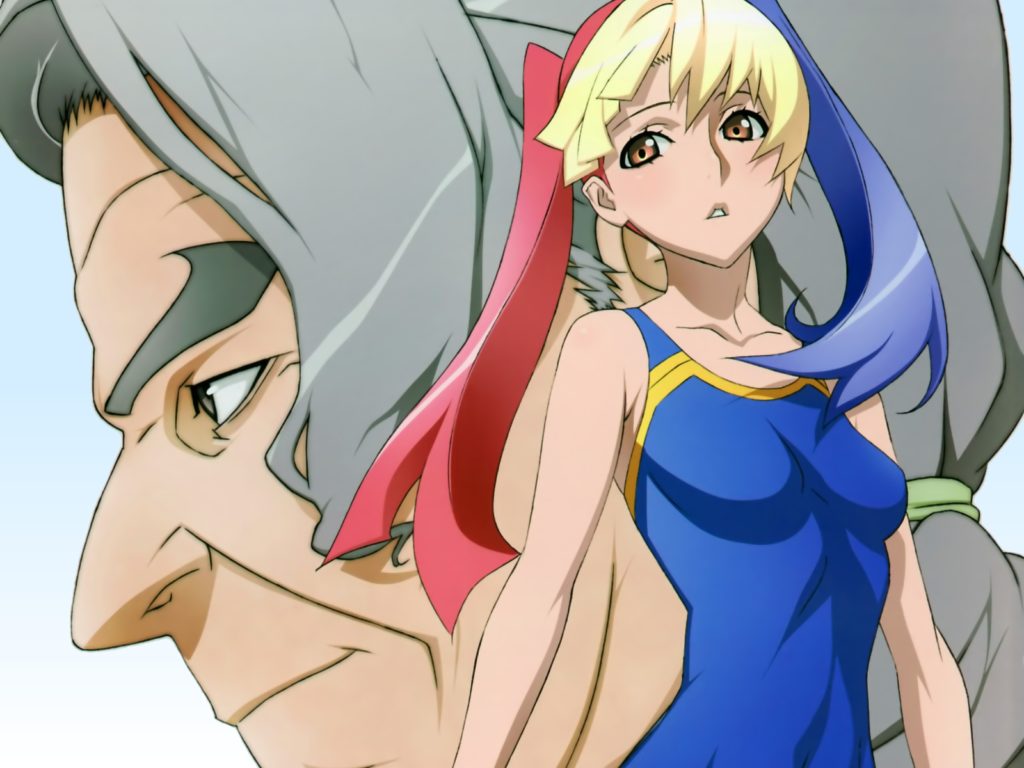
Since killing her “mother”, she becomes numb and unresponsive to others — completely unlike her former hyperactive and loud personality. After hearing of her “father’s” plan to use her as the surrogate for his “perfect clone”, Maria continues to be used — and will be disposed of without knowing and understanding what it means to love and be loved, just like every single Clone before her.
Despite all her efforts of seeking affirmation and affection, she starts to make herself appear more like Rihoko’s biological mother Reina as she overthrows her “father’s” control of his company. But in the end, even a new goal of becoming the strongest would still not bring either her or those around her any happiness; she ultimately reverts back to how she was in the beginning, as she ponders if her mother ever did love her at the time of her death. To be loved was always her wish.
Tragedy on top of tragedy. The closest she got to bonding with someone was with her subordinate Aoi, who met her demise when sacrificing herself to save Maria. Overall, Maria is a very lonely and misunderstood young girl, who never got a chance — and who was never allowed to be normal.
Additional fun tidbits to notice
Aoi’s obsession of Maria is part of an interesting pattern of obsessive tendencies fuelling the enemies of the show; their eventual demise is often triggered by these fixations that ultimately lead them to a complete breakdown, be they human or Cloneblade.
The “father” wants the perfect Witchblade in order to perfect his own genes, and loses his mind when his plan is disrupted by Maria, while the corporate villain of Wado wants wealth but causes a nationwide disaster by doing so. Meanwhile his partner in crime, Rie, is killed when she fixates a little too much on her research as an X-Clone takes her out.
Reina becomes self-destructive through self-exploration when Rihoko unintentionally breaks down her guarded walls, and ultimately causes her breakdown as she develops maternal feelings towards her. Her subordinate Shiori, meanwhile, caves into her sexual desires towards Reina. She goes as far as to sexually assault those important to her to feel closer to her, while Maria’s obsession of Reina is juxtaposed as an innocent want for a motherly figure. This is later turned into a craving for power after she loses her reason for living when taking out both Reina and her “father”.
Shiori also happens to be the weakness of another “sister”, Nora, who vies for their “father’s” validation but feels inadequate compared to their strongest sister, Reina. Overall, the single reason for Masane wanting to live is to protect Rihoko with every fibre of her being. This, in turn, is what brings them both happiness and a sense of belonging — something that none of the “sisters” ever had a chance of feeling, due to their cold and harsh upbringings.
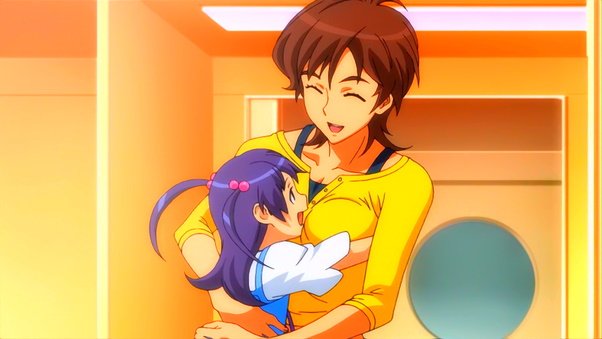
Props should given for the song choices selected for the show’s unskippable opening and ending, specifically its first ones. The opening of “XTC” and the ending of “Ashita no Te” juxtapose beautifully with one another to portray the two extremes you should expect from the anime. “XTC” is a sexy, hungry, rivetingly loud and confident rock number, while “Ashita no Te” is an emotional, gut-wrenching ballad, made most obvious with one look of its lyrics; they’re incredibly fitting to portray Masane’s feelings towards her beloved daughter. Better yet, it’s sung by her voice actress, Mamiko Noto — who truly has a voice of an angel and does an exceptional job at bringing Masane’s character to life.
Each anime episode also includes a “next time” scene as many shows do, but goes about it in an unusual way. Most have the same backdrop of a letter on a table in different locations, or shots depending on where our mother and daughter are currently located in the episode. The spoken dialogue in these sequences is intended to be interpreted as a letter either from Rihoko to Masane, or Masane to Rihoko. Each “letter” alludes to their current situation and their concerns for one another. What hits most is the episode when Rihoko is taken away from Masane; neither utters a word during this sequence, hammering home how emotionally devastated both currently are. It is highly effective.
Conclusion
The anime suffers from a few drawbacks, such as a sudden ending that attempts to pack in far too much plot, in stark contrast to the slower pace throughout the other 23 episodes. It has mediocre fight scenes, and most aggravatingly avoids expanding on the Witchblade lore or at least explaining where it came into being for the anime’s sake.
And yet, the time spent connecting to its deeply troubled characters who are almost all deserving of affirmation and a chance at living a happy life makes Witchblade an engaging watch. And while the most commonly recommended mother and daughter-centric anime are titles such as Wolf Children or Key’s works Kanon and Air, Witchblade’s main dynamic is both gut-wrenching and heartbreaking enough for me to tell you that you should know of their story.
In conclusion, Masane and Rihoko are the purest, sweetest mother and daughter unit ever; how could you deny watching their anime?
You can watch Witchblade on Crunchyroll or Funimation, though note that regional restrictions apply in some areas..
Join The Discussion
Rice Digital Discord
Rice Digital Twitter
Rice Digital Facebook
Or write us a letter for the Rice Digital Friday Letters Page by clicking here!
Disclosure: Some links in this article may be affiliate links, which means we may earn a small commission if you make a purchase after clicking on them. This is at no additional cost to you and helps support Rice Digital!
- Sigh of the Abyss: Shadow Bonds – Prologue Review - October 7, 2023
- Is She The Wolf? is wickedly addicting TV - October 6, 2023
- The steady consumption of Slow Damage - October 5, 2023




